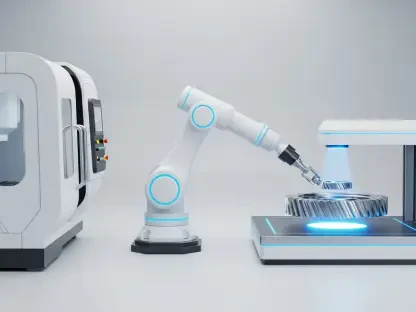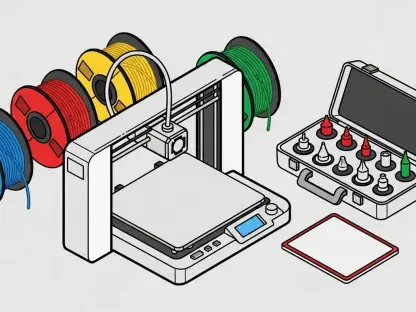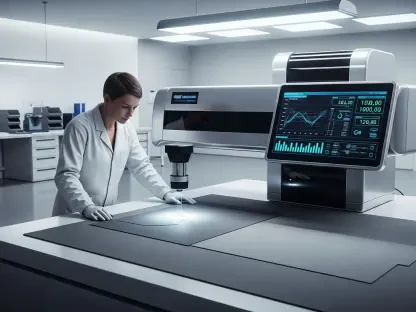Designing and implementing automated food facilities involves not only addressing the technical and operational challenges of food processing but also leveraging technological innovations to enhance production efficiency and sustainability. The advancements in automation, from digital twins to additive manufacturing, open up new avenues for improving food safety, reducing costs, and minimizing environmental impact. In this article, we will delve into how automated food facilities are redefining production processes and promoting sustainability.
Introduction to Automated Food Facilities
Automated food facilities serve as a game changer in the industry, transforming traditional methods of food processing and packaging. The integration of automation not only accelerates production but also brings about a multitude of benefits that extend to environmental sustainability and cost efficiency.
Understanding the Basics of Automation in Food Processing
Automated food processing systems utilize advanced technology to handle tasks that were previously done manually. From sorting and packaging to quality control and cleaning, nearly every aspect of food production can be automated. These systems are designed to be fast, precise, and consistent, significantly improving the overall efficiency of operations. By adopting automation, facilities can achieve higher throughput rates and maintain consistent product quality, which are critical factors in meeting the high demand of today’s market.The automation process often includes robotic arms for packaging, automatic sorting machines, and sensor-based systems for quality assurance. These technologies not only speed up the production line but also enhance accuracy, thereby reducing the likelihood of product recalls due to quality issues. Moreover, automation can facilitate the integration of real-time data analytics, allowing operators to monitor and optimize production processes continually. This level of efficiency is unattainable through manual labor alone and is a testament to the revolutionary impact of automation in food processing.
The Role of Ecor International and Il Sentiero International Campus
Ecor International, in collaboration with Il Sentiero International Campus, exemplifies the successful implementation of automated food processing systems. With a focus on aseptic food sectors, the collaborative efforts have led to innovations in rapid design, prototyping, and reliability engineering. These contributions showcase how expertise in manufacturing critical food-contact components and sophisticated engineering methodologies can culminate in transformative automation solutions that set new standards for the industry.Ecor International has nearly 50 years of experience in producing machinery for the food industry, and its partnership with Il Sentiero International Campus adds a robust layer of research and development capabilities. Together, they have tackled complex challenges, such as ensuring that automated systems meet stringent food safety standards and are capable of handling high-volume production loads. Their approach often involves using digital twin technology and numerical simulations to design and prototype machinery, thereby reducing development times and improving accuracy. This synergy between industry expertise and cutting-edge research is instrumental in driving the advancement of automated food facilities.
Enhancing Production Capacity Through Automation
One of the primary objectives of integrating automation into food facilities is to enhance production capacity. Automated systems are designed to handle large volumes of food with greater speed and accuracy, thereby increasing the hourly production capacity.
Advanced Machinery and Robotics
The use of advanced machinery and robotics in automated food facilities is a significant factor in boosting production capacity. Robots can perform repetitive tasks more efficiently than human workers, with a higher degree of precision and a lower risk of error. This automation of routine tasks ensures a smooth and continuous flow of production, thereby increasing throughput and minimizing downtimes. For instance, robotic arms can handle the delicate task of packaging without causing damage to the products, ensuring that each unit meets the quality standards set by the industry.Moreover, the integration of robotics and advanced machinery allows for real-time monitoring and adjustments, ensuring optimal performance at all times. These systems are equipped with sensors that can detect anomalies and make immediate corrections, thereby maintaining a consistent output quality. The ability to operate 24/7 without the need for breaks also significantly contributes to higher production capacity. This relentless pace of operation is complemented by the machines’ ability to perform complex tasks that would be challenging or unsafe for human workers.
Digital Twin Integration for Predictive Maintenance
Innovations such as digital twins play a crucial role in maintaining high production capacity. By creating virtual replicas of physical machines, digital twins enable predictive maintenance, identifying potential issues before they cause downtime. This predictive approach ensures that machinery operates at peak efficiency, reducing unexpected breakdowns and maintaining continuous production. The integration of digital twins with automated machinery allows operators to simulate various scenarios and optimize machine settings for maximum throughput.These virtual models are particularly effective in stress-testing components and systems, thereby identifying weak links that could cause failures. By addressing these issues proactively, facilities can avoid costly interruptions and maintain a high level of operational efficiency. Additionally, data collected from digital twins can be used for continuous improvement, enabling facilities to refine their processes and achieve even greater production capacity over time. This blend of virtual and physical worlds offers a comprehensive solution for maintaining and enhancing production efficiency.
Efficiency in Production Scheduling
Automated systems also enhance production by optimizing scheduling. Advanced software solutions can analyze production data in real-time to adjust schedules dynamically, ensuring that resources are used most efficiently. By minimizing idle time and maximizing the use of machinery, automated scheduling contributes to a higher overall production capacity. This dynamic scheduling software takes into account various factors such as machine availability, workforce allocation, and raw material supply, thereby creating a balanced and efficient production plan.The real-time nature of these systems allows for quick adjustments in response to changing conditions, such as sudden spikes in demand or unexpected machine downtimes. This flexibility ensures that production schedules are as efficient as possible, reducing bottlenecks and increasing overall throughput. Moreover, the ability to analyze historical data provides insights into long-term trends and helps in making informed decisions for future production planning. This holistic approach to scheduling not only boosts production capacity but also ensures a more resilient and responsive manufacturing process.
Reducing Operational Costs with Automation
While increasing production capacity is a significant advantage, automated food facilities also offer substantial cost savings. By streamlining operations and reducing manual labor, these systems can significantly cut operational costs.
Lower Labor Costs
One of the most direct ways automation reduces costs is by lowering the need for manual labor. Automated systems can perform tasks that would otherwise require a large workforce, and they can do so more quickly and accurately. This reduction in labor not only cuts costs but also minimizes the risk of human error, which can be costly in terms of both time and resources. The initial investment in automation technology may be substantial, but the long-term savings in labor costs make it a financially viable option for many food processing facilities.Furthermore, automation allows for the reallocation of human resources to more strategic roles that require critical thinking and problem-solving skills. This shift not only optimizes labor costs but also enhances overall productivity by utilizing human talent where it is most effective. The combination of reduced labor costs and increased productivity creates a compelling case for the adoption of automation in the food processing industry.
Optimized Resource Utilization
Automation enables more precise control over resources, from raw materials to energy usage. By optimizing these inputs, food processing facilities can reduce waste and lower their overall operating expenses. For example, automated systems can measure out exact quantities of ingredients, reducing the waste associated with overpouring or spillage. This precision is particularly valuable in industries where raw material costs are high, as it directly contributes to cost savings.In addition to raw materials, automated systems can optimize the use of other resources such as water and electricity. Advanced monitoring systems track resource usage in real-time, providing insights into where efficiencies can be gained. For instance, automated machinery can be programmed to shut down during periods of inactivity, thereby reducing energy consumption. These resource optimization strategies not only lower operational costs but also contribute to more sustainable production practices.
Energy Efficiency
Energy efficiency is another area where automation proves cost-effective. Automated systems can be programmed to operate only when necessary, reducing energy consumption during idle times. Additionally, advanced monitoring systems can track energy usage in real-time, providing insights into where further efficiencies can be gained. This allows for more strategic energy management, reducing overall consumption and lowering utility costs.Moreover, the integration of energy-efficient technologies such as variable frequency drives and energy recovery systems further enhances the cost-saving potential of automation. These technologies optimize energy usage by adjusting power levels to match operational needs, thereby eliminating unnecessary energy waste. The cumulative effect of these energy efficiency measures can result in significant cost savings, making automation a financially and environmentally responsible choice for food processing facilities.
Promoting Environmental Sustainability
The automation of food facilities goes hand-in-hand with efforts to promote environmental sustainability. Reducing the environmental footprint of food processing operations is essential in today’s context of climate change and resource scarcity.
Eco-Friendly Design and Prototyping
One of the key methods of promoting sustainability is through eco-friendly design and prototyping. By using advanced engineering techniques, designers can create machinery with lower carbon footprints and more sustainable materials. Rapid prototyping enables quick iterations and refinements, ensuring that final designs are as efficient and eco-friendly as possible. This focus on sustainability extends to the entire lifecycle of the machinery, from production to disposal.Eco-friendly design often involves the use of renewable materials and energy-efficient components, which reduce the environmental impact of manufacturing processes. In addition, designers can integrate features that minimize resource consumption during operation, such as low-energy motors and water-saving technologies. By prioritizing sustainability in the design phase, automated food facilities can significantly reduce their environmental footprint while maintaining high levels of efficiency and productivity.
Sustainable Cleaning Systems
Innovative cleaning systems play a vital role in ensuring that automated food facilities maintain high standards of hygiene while being environmentally sustainable. Aseptic systems designed for minimal water and chemical use reduce environmental impact without compromising food safety. Such systems not only save resources but also decrease the pollution associated with wastewater discharge, making them a critical component of sustainable food processing operations.These cleaning systems often employ advanced technologies such as ultraviolet (UV) light and ozone treatments, which are effective in sanitizing surfaces without the need for harsh chemicals. Additionally, automated cleaning processes can be precisely controlled to ensure optimal resource usage, further enhancing their sustainability. By adopting these innovative solutions, food facilities can achieve the dual goals of maintaining stringent hygiene standards and minimizing their environmental impact.
Reduced Waste Through Precision Engineering
Precision engineering in automated systems reduces waste in several ways. By ensuring that machinery operates within optimal parameters, there is less material waste and product loss. Additionally, precise control over production processes means fewer defective products, contributing to a reduction in overall waste. This focus on precision not only enhances efficiency but also aligns with broader sustainability goals, making it a win-win for both the industry and the environment.Advanced sensors and real-time monitoring systems play a crucial role in achieving this level of precision. These technologies provide continuous feedback on machine performance, enabling operators to make immediate adjustments and avoid wasteful practices. Moreover, data analytics can identify patterns and trends that inform long-term improvements in process efficiency. By leveraging precision engineering and data-driven insights, automated food facilities can significantly reduce their waste output, contributing to a more sustainable production model.
Innovations in Cleaning and Aseptic Systems
Hygiene is paramount in food processing, and automated facilities are at the forefront of employing advanced technologies to ensure the highest standards of cleanliness. The introduction of innovative cleaning and aseptic systems is transforming how food processing plants maintain hygiene while also promoting environmental sustainability.
Advanced Cleaning Technologies
Automated food facilities utilize advanced cleaning technologies to achieve thorough sanitization with minimal resource consumption. Methods such as ultrasonic cleaning, steam cleaning, and high-pressure water jets are commonly employed to ensure that all machinery and surfaces are free from contaminants. Ultrasonic cleaning, for instance, uses high-frequency sound waves to create tiny bubbles in a cleaning solution, effectively removing dirt and bacteria from even the most intricate parts of the machinery.Additionally, steam cleaning is a highly effective method that uses high-temperature steam to kill bacteria and other pathogens without the need for chemical disinfectants. High-pressure water jets can also be used to clean equipment, providing a powerful yet environmentally friendly solution. These advanced cleaning methods not only maintain rigorous hygiene standards but also reduce the reliance on water and chemicals, making them a sustainable choice for automated food facilities.
Automated Cleaning Procedures
Designing and implementing automated food facilities addresses more than just the technical and operational challenges of food processing; it also harnesses technological innovations to boost production efficiency and sustainability. These advanced systems, which range from digital twins to additive manufacturing, create new possibilities for enhancing food safety, lowering costs, and reducing environmental impact.With the adoption of digital twins, manufacturers now have the ability to create virtual replicas of physical assets or systems. This allows for real-time monitoring and adjustments, greatly improving the accuracy and efficiency of production. Additive manufacturing, commonly known as 3D printing, enables the creation of complex food products with less waste, further enhancing sustainability.Automation also plays a key role in ensuring food safety. By minimizing human intervention, automated systems can significantly reduce the risk of contamination. Furthermore, these systems can operate continuously, which leads to improved throughput and consistency in food quality.In this article, we will explore how these technological advancements within automated food facilities are not only revolutionizing production processes but also actively promoting sustainability and transforming the food industry for a more efficient and eco-friendly future.









